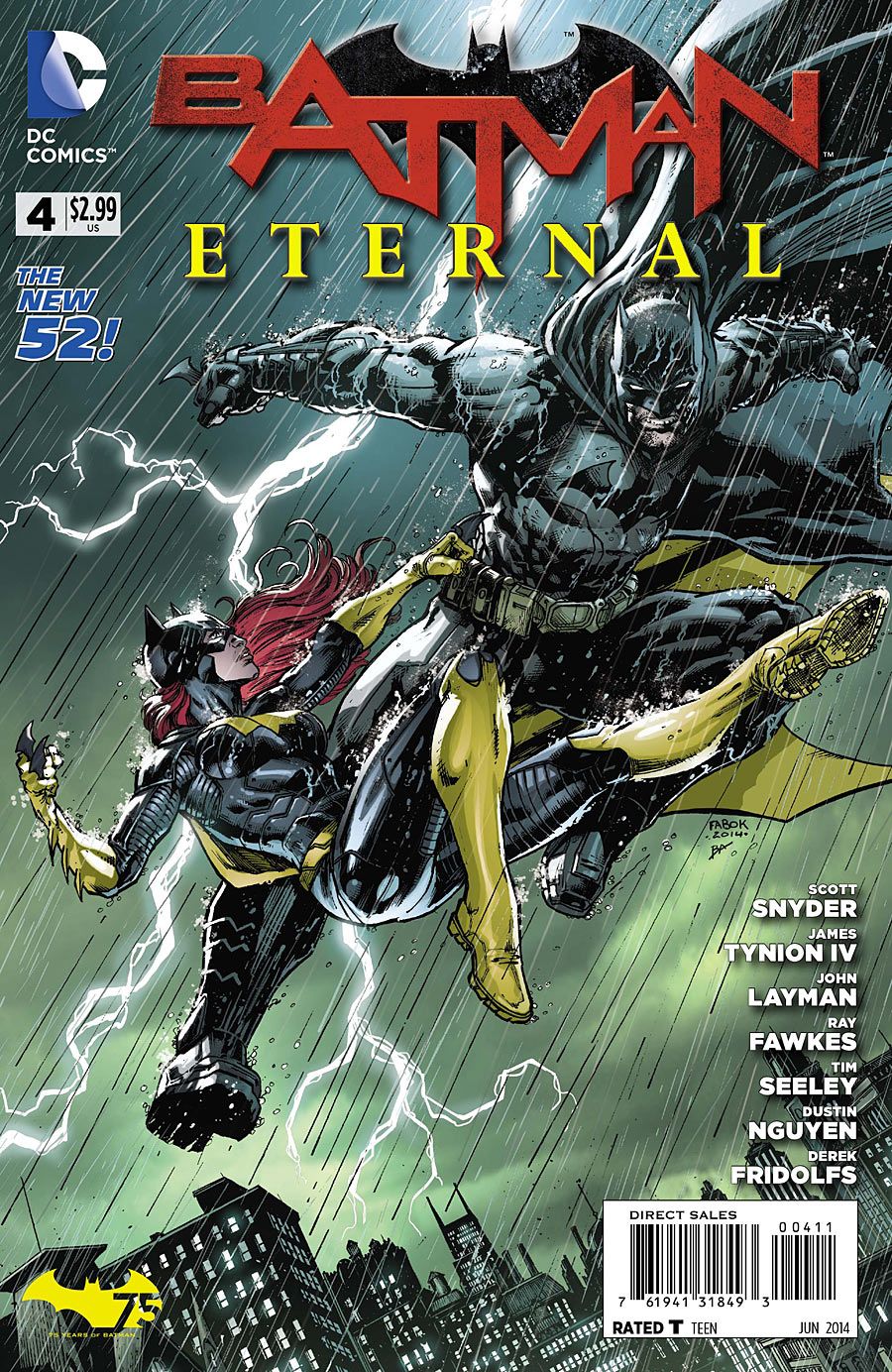In "Batman Eternal" #4 by Scott Snyder, James Tynion IV, John Layman and Dustin Nguyen, Batman confronts Falcone and struggles with Batgirl's approach to dealing with her father being held without bail.
Batgirl's disagreement with Batman over how to handle Jim Gordon's predicament opens "Batman Eternal" #4 and gets prime billing on the cover, but out of all the moving parts within the issue, it is the least satisfying. Their tussle feels artificially exaggerated to play the melodrama. While Batman isn't Gordon's son, he might as well be family. They are on the same side. The truest note is when Batgirl retorts, "What, you're going to start giving me lectures on excessive force now?" Batman has behaved rashly before, so setting him up as a more cool-headed foil to Batgirl's impetuosity and reactive violence just seems to be out of convenience, to make Batman seem more in control.
Similarly, on the villain side, the contrast between Forbes and Bard in the GCPD also feels artificially heightened. Forbes is one-dimensional as a bad cop. In the dialogue and in Nguyen's facial expressions, his greedy ambition and naked opportunism are over the top. Since he's willing to ally himself with a known mobster to get rid of Batman and other vigilantes, it's not the crime or any danger to civilians that he objects to, but how Batman doesn't further his own career and agenda. His foil, Bard, the rookie who worships at the altar of Gordon, goes too far in the other direction. He is almost comically naïve, to the point that the reader wants to shout, "Stop talking!" when he is too forthright in conversation with Forbes. If he doesn't wise up soon, his wide-eyed cluelessness about the new GCPD order will become grating. It's doesn't pay for police to lack street smarts.
Batman's scene with Falcone is a teaser. It's Batman making sure that Falcone knows that he knows what's up, the equivalent to a note that says "I'm watching you." Falcone holds his ground, cementing himself as a worthy antagonist. While he's not sympathetic, he has a more complex presentation than Forbes and stronger presence. His reunion with Batman is a showy flash of muscles and glass, but it's satisfying as the Batman's response to first blood. The cliffhanger ending emphasizes the precarious situation of Gordon as the most valuable pawn in the game. The moves in this game all feel predictable, but it's well-executed enough that it avoids feeling stale.
Another subplot with Stephanie, Cluemaster's daughter, feels the least rote and has an excellent plot twist. The twist is foreshadowed in the dialogue and even more by Nguyen's subtle body language and facial expressions, but the revelation has impact. The art team's work is exceptional in a panel meant to emphasize Stephanie's status as a kid alone in the big city. The nightlife of Gotham is rendered in charcoal-like outlines with a quiet-feeling play of light across the façades of buildings and cars. Kalisz, the colorist, wisely just colors Nguyen and Fridolfs' work here with a light green-gray fill with a gradient into pale yellow-gray light, with just a spot of color to make Stephanie's purple hoodie pop against the background.
The transitions are very smooth for so many changes of setting, and the action of the story is rapid and satisfying across many interconnected subplots: Batgirl and Batman, Jim Gordon, Batman and Falcone, Gotham's criminal world and within the GCPD. Snyder, Tynion and Layman keep all these plot lines strong. "Batman Eternal" #4 feels like a well put-together TV show, and not just in its faster week-to-week pacing. There are many interlocking parts to the plot, and each part holds its own.

